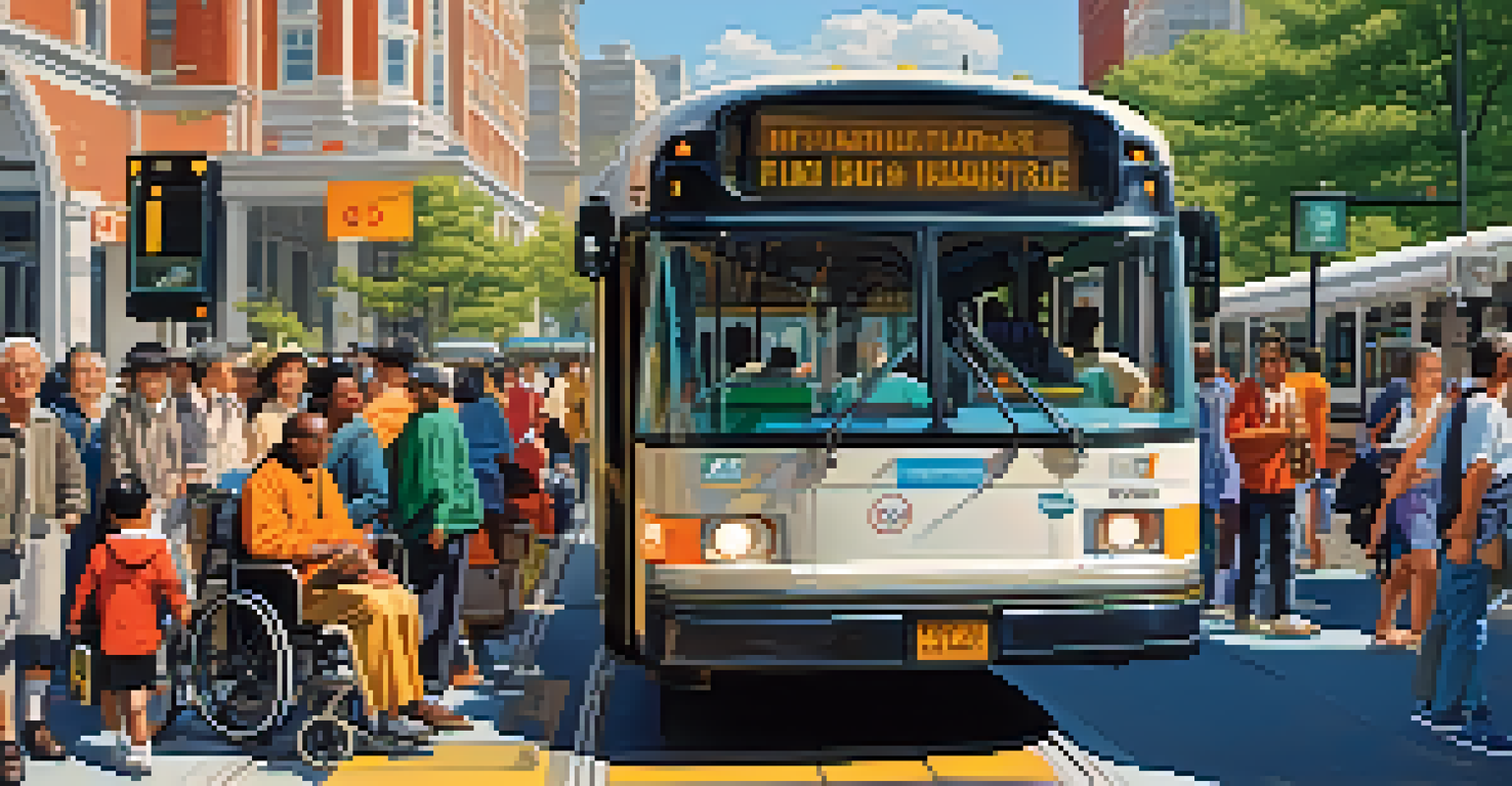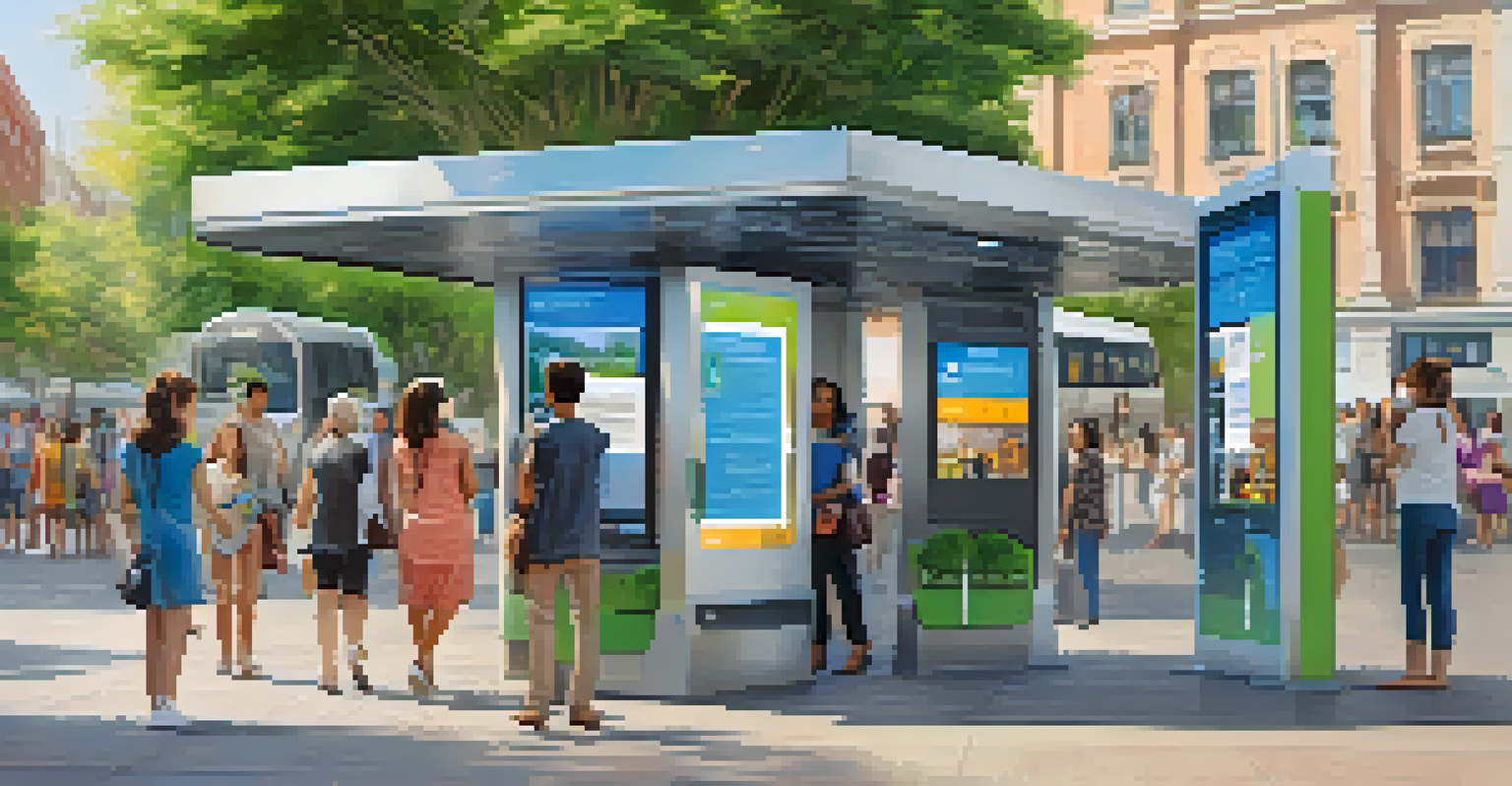Urban Living and Accessibility: Trends for All

The Rise of Inclusive Urban Design for All
Urban design has evolved significantly, focusing on inclusivity. Cities are increasingly embracing the idea that spaces should cater to everyone, regardless of age or ability. This shift reflects a broader understanding of accessibility as a fundamental right rather than a mere afterthought.
Designing urban spaces that are accessible to all is not just an act of kindness; it's a fundamental human right.
For instance, many cities are now implementing universal design principles, which ensure that buildings and public spaces are usable by all people. Features like ramps, tactile paving, and wider doorways are becoming standard rather than optional. This not only makes environments more navigable but also fosters a sense of belonging for all residents.
Moreover, urban planners are engaging with communities to understand their needs better. By involving various stakeholders, from people with disabilities to senior citizens, the designs are more reflective of the diverse populations they serve, creating spaces that truly feel inclusive.
Public Transportation: Making Travel Accessible
Public transportation is a crucial aspect of urban living, and accessibility has become a priority for many cities. Accessible transit options, such as low-floor buses and elevators at train stations, are being expanded to ensure that everyone can travel freely. This enhanced accessibility not only benefits individuals with disabilities but also makes life easier for parents with strollers or elderly riders.

A great example is the ongoing efforts in many metropolitan areas to create real-time tracking apps that include accessibility features. These apps provide information on which vehicles are wheelchair accessible or have designated seating, making travel less stressful. By integrating technology with transportation, cities are breaking down barriers that previously hindered mobility.
Inclusive Urban Design for All
Cities are increasingly adopting universal design principles to ensure public spaces are accessible and welcoming to everyone.
Furthermore, cities are investing in training programs for transit workers to improve their understanding of accessibility needs. This training helps employees assist passengers more effectively, ensuring a smoother travel experience for everyone. Ultimately, a well-connected and accessible public transit system fosters community ties and promotes economic growth.
Green Spaces: Designing Parks for Everyone
Green spaces are vital for urban living, providing a respite from the hustle and bustle of city life. Recent trends show a growing emphasis on designing parks that are accessible to all. This includes features like paved paths, sensory gardens, and dedicated areas for people with various mobility needs.
The future of urban living lies in inclusivity and accessibility for every member of the community.
For example, many cities are now incorporating adaptive playground equipment that can be used by children of all abilities. These inclusive play areas not only promote physical activity but also encourage social interaction among children. By fostering an environment where everyone can play and enjoy nature, cities are nurturing a greater sense of community.
Moreover, the integration of nature into urban planning has proven benefits for mental health. Accessible green spaces offer a place for relaxation and recreation, helping to reduce stress and improve overall well-being. As cities continue to grow, prioritizing accessible parks will be essential for maintaining a healthy urban lifestyle.
Smart Cities: Technology Enhancing Accessibility
The concept of smart cities is gaining momentum, with technology playing a pivotal role in enhancing accessibility. From smart traffic signals that adjust for pedestrians to apps that help navigate urban environments, technology is reshaping how we interact with our cities. These innovations aim to create more efficient and inclusive urban experiences.
For instance, many cities are implementing interactive kiosks that provide information in multiple languages and formats, catering to diverse populations. This accessibility ensures that everyone can access essential services and navigate urban spaces more easily. Technology is not just about convenience; it's about empowering all residents.
Accessible Public Transportation
Enhanced accessibility in public transit, such as low-floor buses and real-time tracking apps, is making travel easier for all residents.
Additionally, data collection on user experiences allows cities to continuously improve their accessibility efforts. By analyzing how people interact with urban spaces, planners can identify and address gaps in service. The result is a dynamic urban environment that evolves based on the needs of its inhabitants.
Community Engagement: Voices of Urban Residents
Community engagement is becoming increasingly important in shaping accessible urban environments. Cities are recognizing that involving residents in the planning process leads to better outcomes. By listening to the voices of those who live and work in the community, planners can create spaces that truly reflect their needs.
Public forums, surveys, and workshops are now common practices for gathering feedback on urban projects. These platforms allow residents, especially those with disabilities, to share their experiences and suggestions. By prioritizing community input, cities can foster a sense of ownership and pride among residents.
Moreover, successful community engagement can lead to innovative solutions that may not have been considered otherwise. For instance, a neighborhood might advocate for specific features like accessible benches or community gardens. These grassroots efforts not only enhance accessibility but also strengthen community bonds.
Legislation and Policy Changes for Accessibility
Legislation plays a critical role in advancing accessibility in urban environments. Governments are increasingly recognizing the need for laws that mandate accessible design in public spaces and transportation. These policies serve as a framework for ensuring that accessibility is prioritized in city planning.
For example, the Americans with Disabilities Act (ADA) has set standards for accessible design in the United States, influencing how cities approach urban development. Compliance with such regulations is essential for creating environments that accommodate everyone, making it a legal and ethical obligation.
Community Engagement Matters
Involving residents in urban planning leads to improved accessibility and fosters a sense of ownership within communities.
Additionally, cities are now setting measurable goals for accessibility improvements, holding themselves accountable to the public. Regular assessments and updates on progress help maintain focus on these initiatives. By embedding accessibility into the legal framework, cities are promoting inclusivity as a core value.
Future Trends: Innovations in Accessibility
Looking ahead, the future of urban living and accessibility is filled with exciting innovations. Emerging technologies, such as augmented reality (AR), are being explored to help individuals navigate complex urban environments. For instance, AR apps can provide real-time information about accessible routes and nearby facilities.
Moreover, the concept of '15-minute cities' is gaining traction, encouraging urban designs where residents can access essential services within a short walk or bike ride. This trend not only promotes sustainability but also enhances accessibility, as it reduces the need for extensive travel. By clustering amenities closer together, cities can create more inclusive environments.

Finally, as society becomes more aware of the importance of accessibility, there will be a stronger push for collaboration among various sectors. Partnerships between government, businesses, and nonprofit organizations can lead to innovative solutions that enhance urban living for all. The future promises a more accessible and equitable urban landscape.